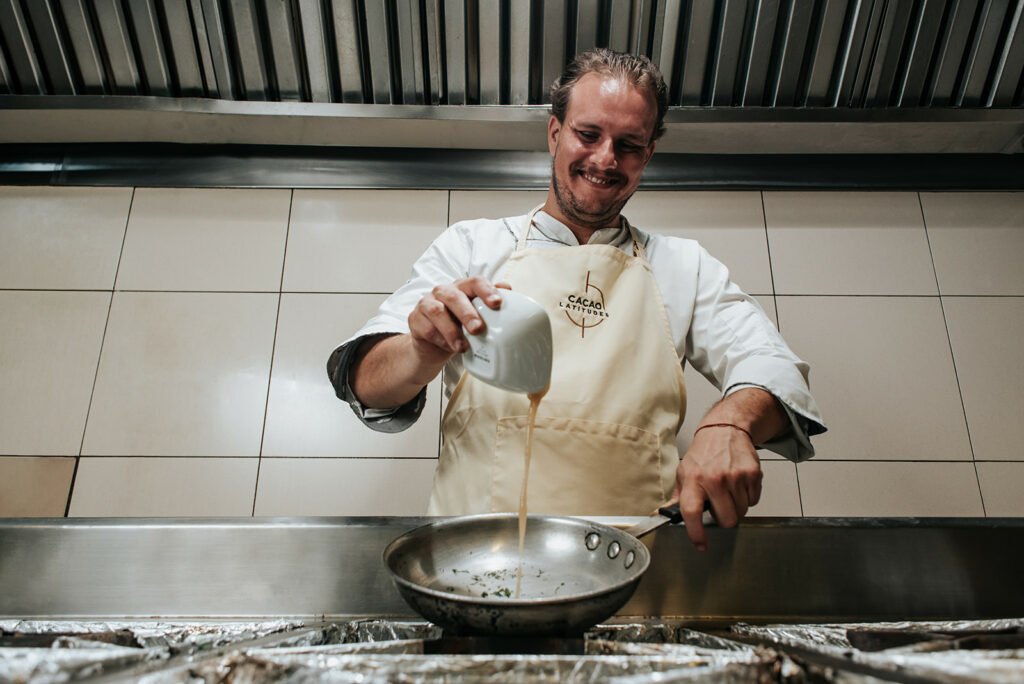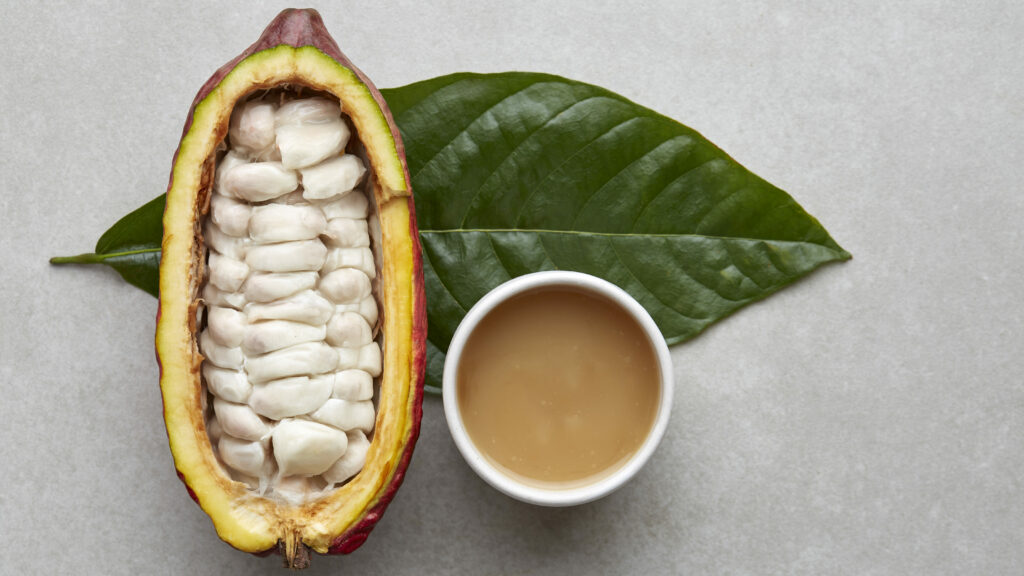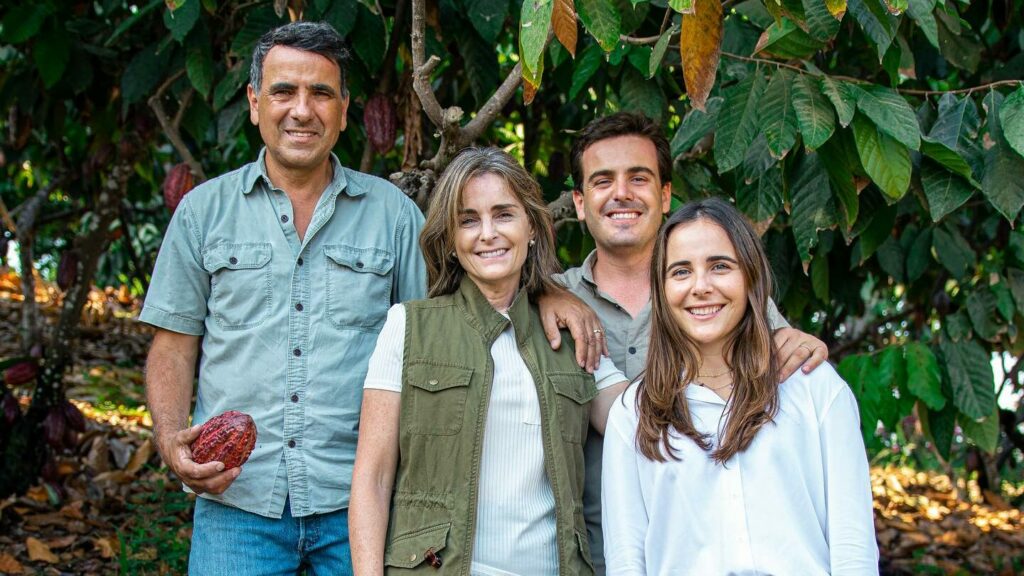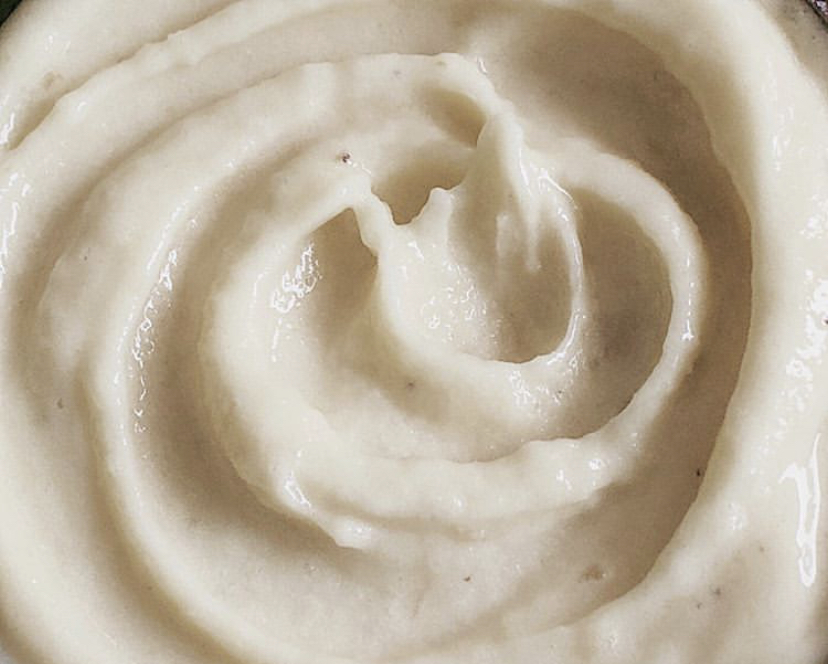The journey through the rich and diverse flavours that can come from the whole cacao pod can travel far from chocolate notes to a world where exotic flavours meet exquisite craftsmanship. We had the privilege of working with the masterful Chef Alvaro San Juan, whose passion for Ecuador’s finest ingredient – cacao pulp – has led to the creation of extraordinary recipes that are nothing short of a gastronomic revelation.

Nestled amidst lush rainforests and nestled along the equatorial line, Ecuador is renowned for its exceptional cacao. While the world may be familiar with its delectable chocolate, the cacao pulp, often overlooked, is a hidden treasure waiting to be explored.

The next generation of cocoa in Palo Santo, Ecuador, is a family focussed in agriculture with environmental impact at the heart of how they grow.

Esteban and his son, are the agronomists of the operation at Palo Santo, where Cacao Latitudes source our pulp. Together they build upon decades of hard work to expand, while maintaining their environmental principles as they scale. Modernisation has proven successful and their passion for cocoa has brought diversity to what they produce, from decorative pods to delicious pulp.
Cacao pulp can be destructive, damaging soil, even tarmac if not managed. Giving value to the excess pulp that would otherwise drop down the fermentary is an improvement or an up cycling method
The pulp is separated from the bean at the time of harvest and then pasteurised and packaged to deliver a tropical and tart ingredient that can be used in an assortment of recipes for chocolate making and patisserie. Chef Alvaro San Juan, a true maestro in the culinary realm, has embarked on a culinary journey to unlock the full potential of this remarkable ingredient.
So, grab your apron, dust off your chef’s hat, and join us as we embark on a gastronomic voyage filled with Ecuadorian cacao pulp delights, expertly crafted by the visionary Chef Alvaro San Juan. Get ready to savour the essence of Ecuador one bite at a time!

Chef Alvaro San Juan about the sensation of the cocoa pulp cake:
“The raw dough has a fruity, tropical flavor that’s quite interesting, somewhat reminiscent of passion fruit, with hints of lime (the yellow one), and it’s very creamy.
When baked, the result is good – it rises well and has a light golden color. The texture is very fluffy, with a lot of air inside, and it could be enhanced with any liquor (rum, brandy, whiskey) to add nuances. In the mouth, there’s a fruit aroma that gets overshadowed by the chocolate, but the result is excellent. I suggest trying the recipe without chocolate for comparison.
Moreover, the cocoa pulp cake is ideal to pair with an ice cream made from the same pulp.”
| Cocoa pulp confiture | 350 g |
| White sugar | 200 g |
| Eggs | 3 |
| Flour | 260 g |
| Butter | 125 g |
| Baking powder | 20 g |
| Total weight | 955 g |
Instructions:

| Cocoa pulp | 500 g |
| Milk | 500 ml |
| Egg yolk | 6 |
| Egg whites | 6 |
| Sugar | 180 g |
Instructions:
Copyright © 2024 Cacao Latitudes | Conditions of Use | Cookie Policy